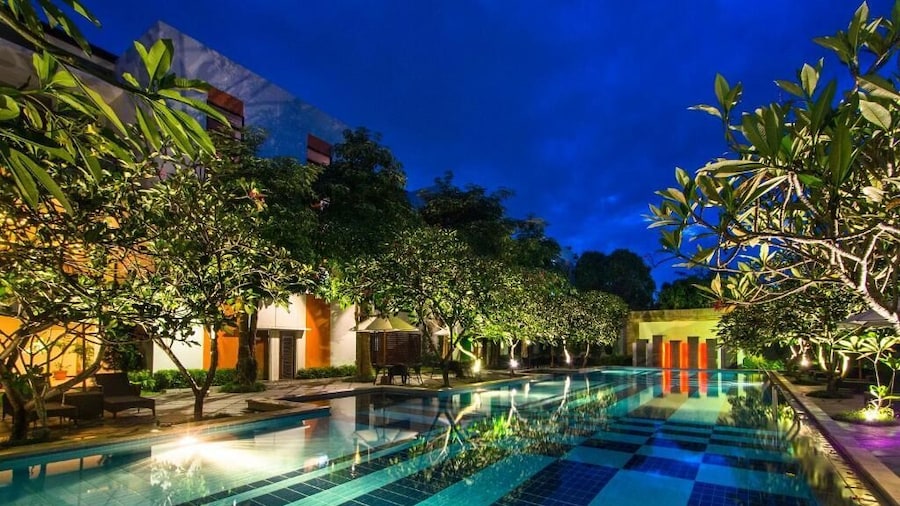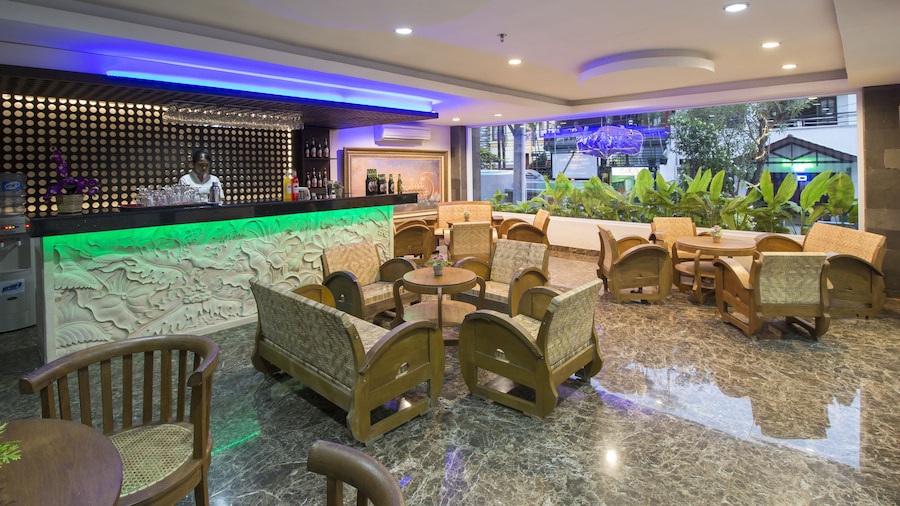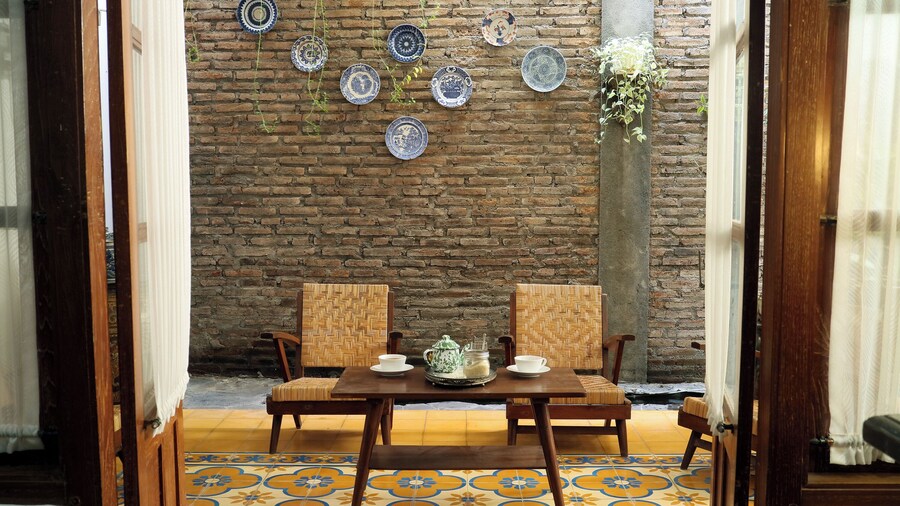Search Deals onTegalrejo Vacation Packages
Photo by Sharrie Shaw
Tegalrejo Flight + Hotel Packages
Price found within the past 48 hours. Click for updated prices.

Delta Homestay
Price was $1,122, price is now $1,074 per person
$1,074
per person
Jan 27 - Jan 29
found 18 hours ago
Roundtrip flight included
Seattle (SEA) to Yogyakarta (YIA)
Stay at this hotel in Yogyakarta. Enjoy free WiFi, free parking, and breakfast (surcharge). Popular attractions Malioboro Street and Batik Plentong are located nearby.

The Victoria Hotel Yogyakarta
Price was $1,241, price is now $1,102 per person
$1,102
per person
Jan 27 - Jan 29
found 18 hours ago
Roundtrip flight included
Seattle (SEA) to Yogyakarta (YIA)
Stay at this hotel in Depok. Enjoy free WiFi, free parking, and free train station pick-up. Popular attractions Malioboro Street and Plaza Ambarrukmo are located nearby.

Grand Puri Saron Yogyakarta
Price was $1,120, price is now $1,090 per person
$1,090
per person
Jan 27 - Jan 29
found 18 hours ago
Roundtrip flight included
Seattle (SEA) to Yogyakarta (YIA)
Stay at this hotel in Yogyakarta. Enjoy free WiFi, free parking, and a 24-hour front desk. Popular attractions Malioboro Street and Malioboro Mall are located nearby.

Omah Gerjen 29
Price was $1,106, price is now $1,081 per person
$1,081
per person
Jan 27 - Jan 29
found 18 hours ago
Roundtrip flight included
Seattle (SEA) to Yogyakarta (YIA)
Stay at this guesthouse in Yogyakarta. Enjoy free WiFi, free parking, and an airport shuttle (surcharge). Popular attractions Malioboro Street and Museum Kereta Kraton are located nearby.

Khas Malioboro
Price was $1,107, price is now $1,093 per person
$1,093
per person
Jan 27 - Jan 29
found 18 hours ago
Roundtrip flight included
Seattle (SEA) to Yogyakarta (YIA)
Book a stay at this business-friendly hotel in Yogyakarta. Enjoy free WiFi, free parking, and breakfast (surcharge). Popular attractions Malioboro Street and Bringharjo Market are located nearby.

Malyabhara Hotel
Price was $1,120, price is now $1,106 per person
$1,106
per person
Jan 27 - Jan 29
found 18 hours ago
Roundtrip flight included
Seattle (SEA) to Yogyakarta (YIA)
Stay at this hotel in Yogyakarta. Enjoy free WiFi, free parking, and a 24-hour front desk. Popular attractions Malioboro Street and Malioboro Mall are located nearby.
Tegalrejo Vacation Packages 3-4 Night Stays
Price found within the past 48 hours. Click for updated prices.


Discover Other Travel Deals
- Museum Sasana Wiratama Vacations
- Malioboro Street Vacations
- Borobudur Temple Vacations
- Prambanan Temple Vacations
- Malioboro Mall Vacations
- Parangtritis Beach Vacations
- Alun Alun Kidul Vacations
- Jogja City Mall Vacations
- Gembira Loka Zoo Vacations
- Plaza Ambarrukmo Vacations
- Tugu Yogyakarta Vacations
- Gadjah Mada University Vacations
- Las Vegas Vacations
- Cancun Vacations
- Miami Vacations
- Corona Vacations
- Cabo San Lucas Vacations
- Disneyland Park Vacations
- New York Vacations
- Honolulu Vacations
- Los Angeles Vacations
- Maui Vacations
- Orlando Vacations
- New Orleans Vacations
- Canada Vacations
- Tulum Vacations
- Bali Vacations
- Maldives Vacations
- Clearwater Beach Vacations
- Denver Vacations
- South Beach Vacations
- Key West Vacations
![Batik (Javanese pronunciation: [ˈbateʔ]; Indonesian: [ˈbatɪk]) is a technique of wax-resist dyeing applied to whole cloth, or cloth made using this technique. Batik is made either by drawing dots and lines of the resist with a spouted tool called a canting (IPA: [ʈ͡ʂantiŋ], also spelled tjanting), or by printing the resist with a copper stamp called a cap (IPA: [ʈ͡ʂap], also spelled tjap). The applied wax resists dyes and therefore allows the artisan to color selectively by soaking the cloth in one color, removing the wax with boiling water, and repeating if multiple colors are desired.
A tradition of making batik is found in various countries, including Nigeria, China, India, Malaysia, Philippines and Sri Lanka; the batik of Indonesia, however, is the most well-known. Indonesian batik made in the island of Java has a long history of acculturation, with diverse patterns influenced by a variety of cultures, and is the most developed in terms of pattern, technique, and the quality of workmanship. On October 2009, UNESCO designated Indonesian batik as a Masterpiece of Oral and Intangible Heritage of Humanity.
Source: Wikipedia
These batik clothes are sold at one of the high end hotel's gift shop in Yogyakarta. They are hand drawn and painted and hence command a high price! It ranges over US$200 although some cheap batik at the market can be found for a mere US$2. The difference lies in the quality, the design and also the amount of skill that's needed to make them.
Common batik wear are made from cotton. The ones shown here are silk and limited in quantity produced.
Yogyakarta and Surakata (Solo) are two cities where batik originated in Indonesia.
#unesco](https://mediaim.expedia.com/destination/2/f4b8beec958977ddad4eee1d1d3132b2.jpg?impolicy=fcrop&w=1920&h=480&q=medium)

